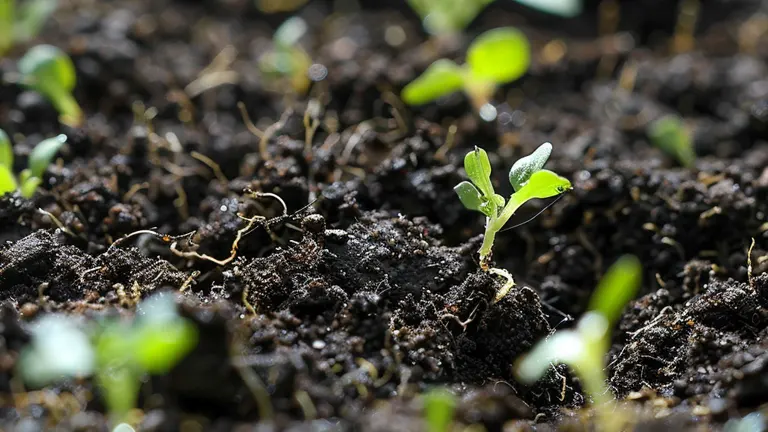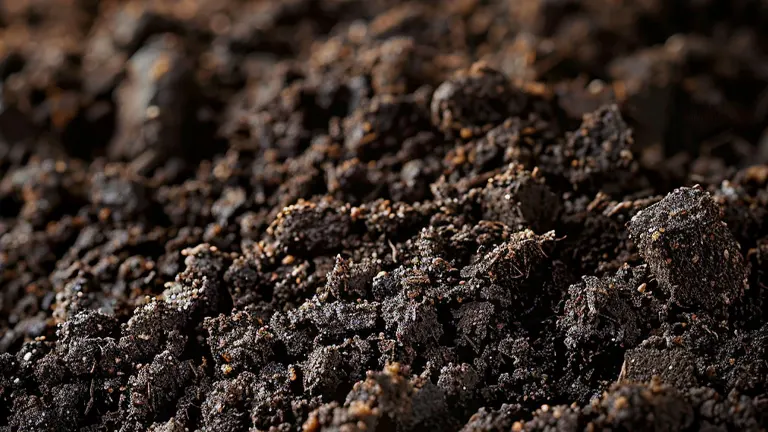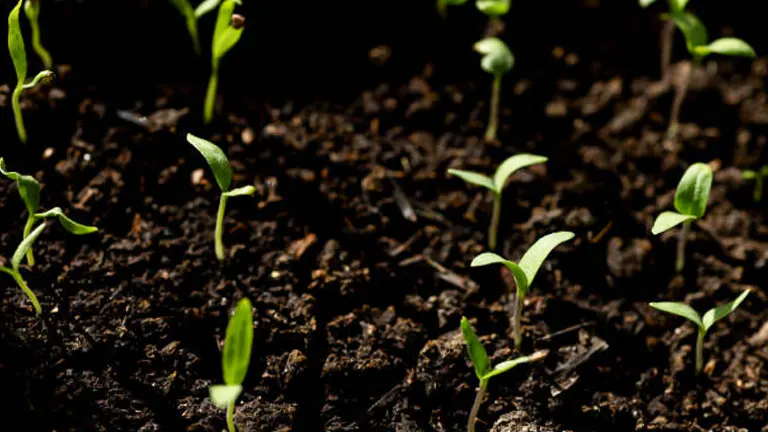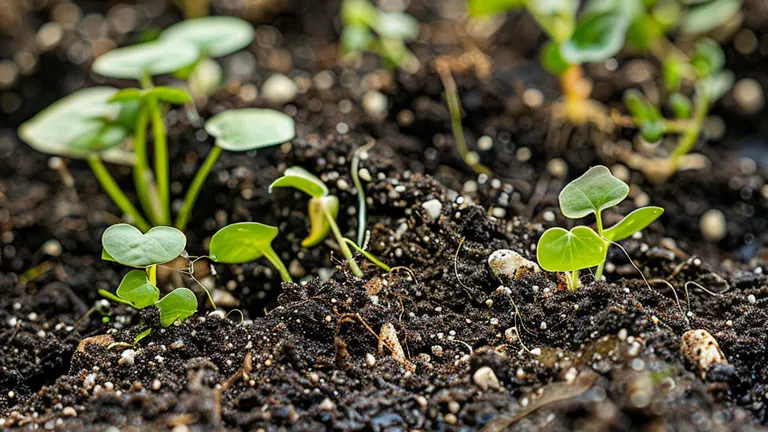What is Humus in Soil? Explore the Critical Advantages for Your Crops
- May 31, 2024
- 0 comment
What is Humus in Soil? Learn its pivotal role in enhancing soil fertility and crop yield, boosting your garden’s health and productivity. Soil is not just dirt—it’s a vibrant ecosystem essential for plant growth. Among its most beneficial components is humus, a complex organic substance that turns average soil into a powerhouse for your crops.

In this guide, we’ll dive deep into the nature of humus, uncovering how it serves as the backbone of fertile, productive gardens and farms. Discover how this miraculous component can elevate your gardening game to new heights.
Table of Contents
- What is Humus?
- The Critical Advantages of Humus in Soil
- How Humus Benefits Crops
- How to Increase Humus in Your Soil
- The Role of Humus in Sustainable Agriculture
- Advanced Tips for Managing Humus in Different Soil Types
- Conclusion
- FAQs
What is Humus?

Humus refers to the rich, dark organic material in soil, resulting from the decomposition of plant and animal matter. This process, known as humification, involves the complex biochemical breakdown of organic substances by soil microorganisms, such as fungi and bacteria. Humus is distinct from other forms of organic matter such as compost. While compost is partially decomposed and can degrade within a few seasons, humus is a highly stable compound that can persist in soil for centuries due to its complex molecular structure.
Chemical Composition and Stability
Humus consists primarily of carbon, nitrogen, hydrogen, and oxygen, with typical ratios of 55:5:3:35, respectively. It also contains phenolic and carboxylic functional groups that contribute to its acidic nature and high cation exchange capacity. This stability and molecular complexity make humus resistant to further decomposition and provide a slow-release mechanism for nutrients.
Impact on Soil Structure and Health
Humus significantly improves soil structure. It aggregates soil particles into granular structures, enhancing soil’s aeration and water retention capabilities. These aggregates are stable yet porous, allowing roots to penetrate soil easily and access water and nutrients efficiently. The cation exchange capacity of humus is particularly noteworthy; it can range from 200 to 400 cmol/kg, enabling it to store and supply nutrients effectively to plants.
Hydration and Thermal Properties
One of the remarkable properties of humus is its ability to retain water—up to 90% of its weight. This high water retention capacity is crucial in dry conditions, providing a consistent moisture supply to plants. Additionally, the dark color of humus helps in absorbing heat from sunlight, which can raise soil temperature by several degrees, promoting seed germination and root development in early spring.
Key Properties of Humus
| Property | Value | Impact on Soil |
|---|---|---|
| Cation Exchange Capacity | 200-400 cmol/kg | Enhances nutrient supply to plants |
| Water Retention | Up to 90% of its weight | Maintains soil moisture |
| Color | Dark | Increases soil temperature |
| Stability | Centuries | Provides long-term soil improvement |
The Critical Advantages of Humus in Soil
Enhanced Soil Structure

Humus fundamentally alters soil architecture. By promoting the formation of aggregates—clusters of soil particles bonded together—it markedly improves the soil’s texture and structural integrity. These aggregates enhance porosity and aeration, crucial for root growth and the circulation of air, vital for subterranean life forms. Additionally, the stability provided by these aggregates reduces soil erosion significantly, especially during heavy rains. Research indicates that soils with high humus content can exhibit a 20-30% increase in aggregate stability, dramatically reducing erosion rates.
Increased Water Retention
Humus’s role in water management is invaluable. Its highly porous nature enables it to act like a sponge, holding up to six times its weight in water. This capacity is particularly crucial during periods of drought or in arid climates, as it reduces the frequency of irrigation needed. By maintaining optimal moisture levels, humus ensures that plants have continuous access to water, vital for their growth and for activating water-soluble nutrients.
Nutrient Retention and Exchange
Humus serves as a nutrient reservoir, clutching essential ions such as calcium, potassium, and magnesium. It releases these nutrients gradually, in sync with plant needs, enhancing nutrient availability and uptake. Its cation exchange capacity (CEC)—often measuring over 300 cmol/kg—enables it to store these nutrients and prevent their leaching into deeper soil layers, away from plant roots. This not only makes fertilization more efficient but also minimizes the need for synthetic chemical inputs.
Supporting Soil Life
Beyond its physical and chemical benefits, humus significantly bolsters the biological health of soil. It is a vibrant habitat for microorganisms, including bacteria and fungi, that are essential in the nutrient cycling process. These microorganisms decompose organic materials, transforming them into forms readily absorbed by plant roots. The rich microbial activity fostered by humus not only improves soil fertility but also bolsters the soil’s defense mechanisms against pests and diseases.
Key Benefits of Humus in Soil
| Benefit | Description | Impact |
|---|---|---|
| Soil Structure | Improves texture and stability | Reduces erosion, enhances root growth |
| Water Retention | Holds up to 6x its weight in water | Reduces irrigation needs, supports growth in drought conditions |
| Nutrient Management | High cation exchange capacity | Prevents nutrient leaching, reduces fertilizer need |
| Biodiversity | Supports diverse microbial life | Enhances soil fertility, natural pest control |
How Humus Benefits Crops
Boost in Crop Yield and Health

The incorporation of humus into soil is closely associated with improved plant vigor and productivity. This organic component enhances soil structure, boosts nutrient availability, and maintains optimal moisture levels, creating ideal conditions for plant growth. Research indicates that humus can increase crop yields by up to 30% compared to soils with low organic matter. The key mechanism behind this boost is the improved soil structure which facilitates better root growth and nutrient uptake efficiency.
Disease Resistance
Plants grown in humus-rich soil exhibit enhanced resistance to diseases. The diversity of the soil microbiome, enriched by the presence of humus, plays a critical role in suppressing pathogens. For instance, humus supports beneficial fungi and bacteria that can outcompete or inhibit disease-causing organisms. Studies have shown that humus-rich soils can reduce the incidence of common root diseases by up to 50%, thanks to these microbial interactions and the improved nutritional status of the plants.
Stress Tolerance
Humus significantly improves a crop’s ability to withstand environmental stresses such as drought, heat, and nutrient deficiencies. Its exceptional water retention capabilities—humus can hold water up to 90% of its weight—act as a buffer against drought conditions, allowing plants to continue their physiological processes even in dry periods. Additionally, the dark color of humus aids in soil warming, which can protect roots against sudden temperature drops and facilitate early seed germination in cooler climates.
Scientifically Measured Benefits of Humus in Crop Production
| Benefit | Description | Measured Improvement |
|---|---|---|
| Crop Yield | Enhanced growth due to improved soil structure | Up to 30% increase in yield |
| Disease Resistance | Microbiome diversity suppresses pathogens | Up to 50% reduction in diseases |
| Stress Tolerance | Water retention and temperature moderation | Maintains growth in adverse conditions |
How to Increase Humus in Your Soil
Organic Matter Additions

Adding organic materials is the most straightforward and effective method to boost humus levels in soil. This includes compost, decomposed leaves, manure, and grass clippings. These materials provide the necessary substrates for soil microorganisms, which are crucial in the humification process. For instance, adding a 5 cm layer of compost to the soil can increase humus content by up to 3% over a season, significantly enhancing soil fertility and water retention. It’s important to vary the types of organic matter used to ensure a balanced supply of nutrients and to promote a diverse microbial ecosystem.
Reducing Soil Disturbance
Practices such as no-till or reduced-till farming are essential in increasing humus content. These methods preserve the soil structure, protect the microbial habitat, and allow organic materials to decompose naturally on the soil surface. Studies have shown that switching from conventional tillage to no-till can increase soil organic carbon levels by up to 15% within the first few years, largely due to enhanced humus formation. This not only helps in building soil health but also mitigates erosion and prevents the loss of topsoil.
Cover Cropping
Implementing cover crops like clover, vetch, and rye during off-seasons is an effective strategy to improve soil humus. These plants add organic matter through their roots and decaying foliage, which naturally converts into humus. Moreover, cover crops are beneficial for soil structure and help in nitrogen fixation, which further boosts soil fertility. A systematic review has noted that cover cropping can enhance soil organic matter content by about 10-20% over a 5-year period.
Regular Soil Testing
To manage and enhance humus effectively, regular soil testing is imperative. Soil tests help gauge the current organic matter content, nutrient status, and pH levels, providing critical data that guide the application of organic amendments. For example, soils with lower baseline organic matter might require more frequent and diverse organic additions compared to those with already high humus content.
Strategies to Increase Soil Humus and Their Impact
| Strategy | Description | Impact Measurement |
|---|---|---|
| Organic Matter Additions | Application of compost, manure, etc. | Up to 3% increase in humus per season |
| Reducing Soil Disturbance | Implementation of no-till farming | Up to 15% increase in soil organic carbon |
| Cover Cropping | Use of legumes and other cover crops | 10-20% increase in organic matter over 5 years |
| Regular Soil Testing | Monitoring soil health and humus levels | Optimizes amendment strategies based on specific soil needs |
The Role of Humus in Sustainable Agriculture

Humus is a cornerstone of sustainable agriculture, profoundly impacting soil management and environmental health. Its role extends beyond basic soil amendment; it is a critical component in the global carbon cycle and sustainable farming practices.
Humus significantly contributes to carbon sequestration, a process vital for mitigating climate change. Through humification, carbon from decomposing organic matter is converted into a stable form, stored in humus for centuries rather than being released back into the atmosphere. Scientific studies estimate that humus can sequester up to 2,000 kg of carbon per hectare per year, reducing the concentration of CO2 in the atmosphere and combatting global warming.
Reduction in Mechanical Tillage
The structure-enhancing qualities of humus reduce the need for mechanical tillage. Traditional tillage disrupts soil structure, increases erosion, and releases stored carbon into the atmosphere. By improving soil aggregation, humus maintains aeration and water infiltration naturally, reducing the need for fuel-powered tillage practices, which can decrease fossil fuel consumption by up to 50% in extensive agricultural setups.
Water and Resource Conservation
Humus improves the soil’s water retention capacity, significantly reducing the need for irrigation. In areas prone to drought, humus can reduce water usage by up to 30%, conserving valuable water resources and reducing energy consumption related to water pumping and distribution. Furthermore, the nutrient retention properties of humus decrease the necessity for synthetic fertilizers, which are not only energy-intensive to produce but also contribute to soil and water pollution.
Enhancing Soil Ecosystem Health
By fostering a biodiverse soil ecosystem, humus reduces the reliance on chemical pesticides. Its support for beneficial microbes and fungi helps naturally control pest populations and disease, promoting healthier crop growth with less chemical intervention. This not only preserves local wildlife and water quality but also enhances crop resilience and yield.
Quantified Benefits of Humus in Sustainable Agriculture
| Benefit | Description | Impact Measurement |
|---|---|---|
| Carbon Sequestration | Stability of carbon in soil | Up to 2,000 kg C/ha/year sequestered |
| Reduction in Mechanical Tillage | Decreased soil disruption | Up to 50% reduction in fossil fuel consumption |
| Water and Resource Conservation | Enhanced water retention and nutrient efficiency | Up to 30% reduction in irrigation needs |
| Soil Ecosystem Health | Support for biodiversity and natural pest control | Reduction in pesticide use and improved crop health |
Advanced Tips for Managing Humus in Different Soil Types
The management of humus can vary significantly depending on the type of soil. Here are some tailored strategies for enhancing humus content in various soil conditions:
- Clay Soil: In heavy clay soils, which can be dense and poorly aerated, incorporating coarse organic materials like straw or wood chips can help improve structure and humus content. Regular applications of compost and green manures also facilitate the gradual build-up of humus, improving drainage and root penetration.
- Sandy Soil: Sandy soils drain quickly and can struggle to retain nutrients. To increase humus content, incorporate plenty of rich organic matter like composted manure or leaf mold. These materials help bind the sandy particles together and retain both moisture and nutrients, enhancing the soil’s fertility over time.
- Loamy Soil: Loamy soils are naturally fertile, but adding humus will further improve their structure and nutrient-holding capacity. Regular additions of compost, along with maintaining a cover crop during the off-season, can significantly boost humus levels without disrupting the soil’s natural balance.
In all cases, minimizing soil disturbance preserves existing humus and encourages the natural processes of humification. Regular soil testing can guide the amendment process, ensuring that the efforts to increase humus are both effective and tailored to the specific needs of the soil.
Related Post
- How to Build a Barn: A Step-by-Step Guide for Beginners
- How to Build a Sustainable Compost Bin: Easy and Eco-Friendly DIY
- How to Fertilize Bougainvillea: A Complete Guide for Stunning Blooms
- How to Fertilize Apple Trees: Essential Tips for a Bountiful Harvest
- How to Fertilize Lemon Trees: Secrets for Thriving Citrus
- How to Fertilize Avocado Tree: A Step-by-Step Guide for Lush Growth
- 10 Best Bow Saws to Buy in 2024: Top Picks for the Money
- Best Miter Saw For Beginners
- Top 10 Pruning Saws to Buy in 2024: Best for the Money
- 7 Best Pocket Chainsaw
Conclusion
Humus is a powerhouse in the soil ecosystem, offering extensive benefits that enhance the health and productivity of crops. By understanding its role and actively working to increase its presence in your soil, you can achieve more resilient, productive, and sustainable agricultural practices. Embrace the practices outlined here to enrich your soil with humus and watch your garden or farm thrive like never before.
FAQs
- What exactly is humus, and how is it different from compost?
Humus is the stable, dark organic material in soil formed from the decomposition of plant and animal matter. Unlike compost, which is partially decomposed organic matter, humus is fully decomposed, making it more stable and beneficial for soil health over a longer period. - How does humus contribute to soil fertility?
Humus improves soil fertility by enhancing nutrient retention, increasing water retention, and maintaining soil structure. It acts as a reservoir for nutrients, releasing them slowly and making them available to plants as needed. - Can humus help in water conservation?
Yes, humus significantly increases the soil’s ability to retain water, reducing the need for frequent watering. Its porous nature allows it to absorb and hold water, which is then gradually available to plants. - Does adding humus to the soil help with pest control?
While humus itself doesn’t directly control pests, it promotes a healthy soil ecosystem with a diverse microbial population that can help suppress soil-borne diseases and pests, indirectly benefiting plant health. - Is there a quick method to increase humus in my garden soil?
While building humus is a slow process, regularly adding organic matter such as compost, leaf mold, or manure and minimizing soil disturbance can accelerate humus formation. - How often should I test my soil for humus content?
Testing soil every 1-2 years is generally sufficient. This frequency helps monitor humus levels and guides the appropriate amendments to maintain optimal soil health. - Are there specific plants that contribute more to humus formation when used as green manures?
Leguminous plants like clover, peas, and beans are particularly effective as green manures for building humus because they add nitrogen to the soil, which is crucial for microbial activity that leads to humification. - What role does humus play in combating climate change?
Humus plays a significant role in carbon sequestration, capturing atmospheric carbon dioxide and storing it in a stable form in the soil. This not only helps mitigate climate change but also enriches soil fertility.
Thank you for joining us on this exploration of humus and its pivotal role in soil health and crop productivity. Remember, nurturing your soil with humus is an investment in your garden’s future. Start enhancing your soil today and watch your crops thrive!

Kristine Moore
Forestry AuthorI'm Kristine Moore, a seasoned garden landscaping professional with over 30 years of experience. My extensive career has been dedicated to transforming outdoor spaces into stunning, sustainable landscapes. With a deep understanding of horticulture, design principles, and environmental stewardship, I have become a respected figure in the field, known for creating harmonious, visually appealing, and eco-friendly gardens. My commitment to excellence and continuous learning in landscaping trends and techniques has solidified my reputation as an expert in garden design and implementation.













Leave your comment